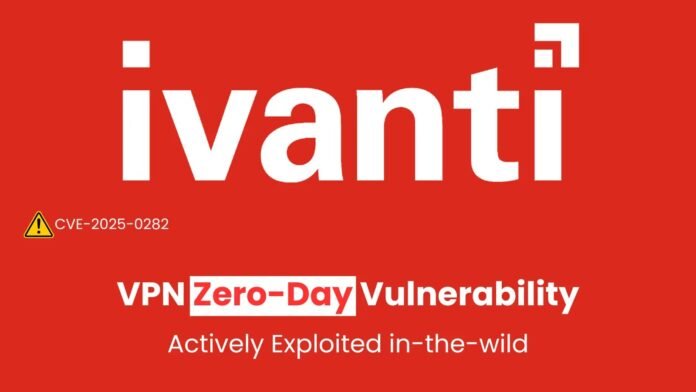Understanding the Critical Zero-Day Vulnerability CVE-2025-0282 in Ivanti Connect Secure VPN
In the ever-evolving landscape of cybersecurity, vulnerabilities in widely used software can pose significant risks to organizations worldwide. Recently, Ivanti disclosed a critical zero-day vulnerability, CVE-2025-0282, affecting its Connect Secure VPN appliances. This article delves into the nature of this vulnerability, its implications, and the necessary steps for organizations to mitigate the risks associated with it.
What is CVE-2025-0282?
CVE-2025-0282 is classified as a stack-based buffer overflow vulnerability, rated critical with a CVSS score of 9.0. This vulnerability affects Ivanti Connect Secure (ICS) versions prior to 22.7R2.5, Ivanti Policy Secure (IPS) versions prior to 22.7R1.2, and Ivanti Neurons for ZTA gateways versions prior to 22.7R2.3. The exploitation of this vulnerability allows remote attackers to execute arbitrary code without the need for authentication, making it particularly dangerous.
The Secondary Vulnerability: CVE-2025-0283
In addition to CVE-2025-0282, Ivanti has identified a second vulnerability, CVE-2025-0283, which enables local privilege escalation. This vulnerability is rated high severity with a CVSS score of 7.0 and affects the same products. However, as of the disclosure date, there is no evidence to suggest that CVE-2025-0283 has been exploited in the wild.
Active Exploitation of CVE-2025-0282
Ivanti has confirmed that CVE-2025-0282 has been actively exploited in a limited number of cases. The exploitation was detected using Ivanti’s Integrity Checker Tool (ICT), which flagged malicious activity on affected systems. Notably, there is no indication that this vulnerability has been exploited in Ivanti Policy Secure or ZTA gateways.
The Threat Actor Behind the Exploitation
Cybersecurity firm Mandiant has linked the exploitation of CVE-2025-0282 to a sophisticated threat actor cluster known as UNC5337, believed to be part of UNC5221. The attackers utilized malware from the SPAWN ecosystem, deploying various tools such as SPAWNANT (installer), SPAWNMOLE (tunneler), and SPAWNSNAIL (SSH backdoor). This highlights the increasing risks posed by advanced persistent threats targeting enterprise VPNs.
Immediate Actions for Affected Customers
In response to the vulnerabilities, Ivanti has released an emergency patch for Connect Secure devices, resolving both CVE-2025-0282 and CVE-2025-0283 in version 22.7R2.5. Customers using Connect Secure are urged to upgrade immediately. If ICT scans indicate signs of compromise, a factory reset should be performed before applying the patch.
For customers using Policy Secure and ZTA Gateways, while these products have not been exploited yet, it is advisable to follow best practices by ensuring they are not exposed to the internet and to await the scheduled patch release on January 21, 2025.
Utilizing the Integrity Checker Tool (ICT)
To assist customers in identifying potential compromises, Ivanti recommends the use of its Integrity Checker Tool (ICT). This tool analyzes file integrity and detects unauthorized changes, providing a snapshot of the current state of an appliance. However, it is important to note that ICT has limitations; it cannot detect past malicious activity if attackers have removed evidence or restored the system to an unaltered state. Additionally, ICT does not scan for malware or other Indicators of Compromise (IoCs).
Understanding Indicators of Compromise (IoCs)
Mandiant has identified various IoCs associated with the exploitation of CVE-2025-0282. These include:
- DRYHOOK: Credential Theft Tool
- PHASEJAM: Web Shell dropper
- SPAWNSNAIL: SSH backdoor
- SPAWNMOLE: Tunneler
- SPAWNANT: Installer
These IoCs are critical for organizations to monitor and defend against potential threats.
Conclusion
The disclosure of CVE-2025-0282 serves as a stark reminder of the vulnerabilities that can exist in widely used software, particularly in critical infrastructure like VPNs. Organizations must act swiftly to patch affected systems and employ best practices to mitigate risks. As cyber threats continue to evolve, staying informed and proactive is essential in safeguarding sensitive data and maintaining the integrity of network security.


